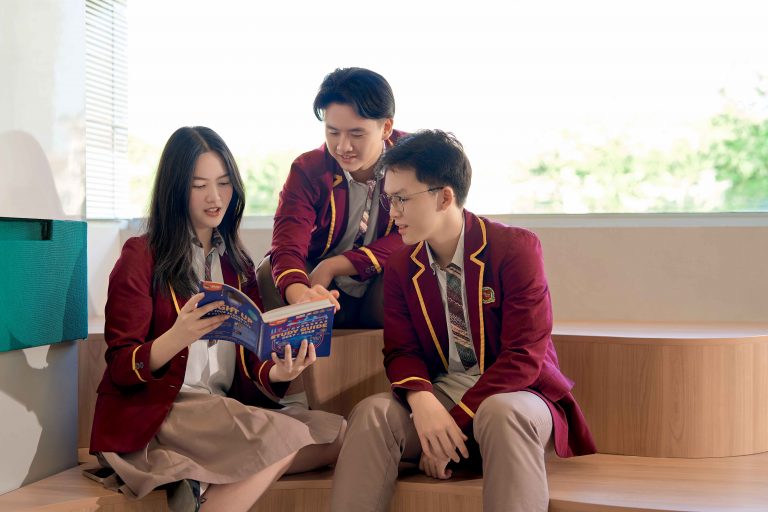IB Interdisciplinary Learning: Connecting Knowledge Across Disciplines

It’s not enough to only learn by memorising facts or happenings from textbooks anymore. Students must connect with many things instead of sticking to a subject.
That’s why the International Baccalaureate (IB) has Interdisciplinary Learning (IDL)! It encourages students to combine many separate subjects, such as maths, science, and history.
The idea is to help students have a broader perspective and to make connections between various concepts and how they can work together.
Let’s learn how the IB’s approach to IL helps students become better thinkers and why it’s an integral part of the programme.
What is Interdisciplinary Learning in the IB?
In the IB, IDL means mixing ideas from different subjects to create a deeper understanding. In other words, students see how each subject connects.
When discussing environmental problems, for example, students can examine how science, social studies, and geography work together to solve one specific issue.
This method asks students to think more broadly and see the world more connectedly, hoping to handle complex topics and come up with new, practical solutions. This is only possible if they know and look at one subject.
Key Features of Interdisciplinary Learning
This learning has a few key features that make it effective. The first is combining subjects. Students can mix two or more subjects to explore ideas differently instead of studying and focusing on one separately.
For instance, combining history and literature to understand how historical events influence storytelling is a good choice. It could give students a profound understanding of the topic.
Another feature of Interdisciplinary Learning is that it encourages hands-on learning. Students are expected to work on projects or case studies, and then we let them use knowledge from different subjects to solve real-world problems.
For example, they might design a project combining art and technology to create a new product.
And teamwork is also a big part of the learning. Students often work in groups, learning how to communicate and collaborate effectively, which are crucial skills for life after school.
The Importance of IDL in Developing Lifelong Learners
Interdisciplinary Learning (IDL) is essential for helping students become lifelong learners, as it teaches them how to think flexibly and adaptably.
The main focus is for students to connect ideas from different areas. This way of thinking helps them see the bigger picture and understand how things are linked in the real world.
Most workplace problems require a mix of skills from different departments or areas, like using maths to manage finances and communication skills to work in a team.
By learning to make these connections early on, students develop critical thinking skills that stay with them long after they’ve left the classroom. Knowing how to keep learning and adjusting is super important as things change.
Interdisciplinary Units (IDUs) in Action
Interdisciplinary Units (IDUs) in the IB are where students apply what they’ve learned in different subjects of IDUs by combining two or more.
One use case is where students work on a project combining science and geography to study climate change.
They’ll examine the science behind it, such as the greenhouse effect, and then explore its geographical impact on different countries.
It’s a way to make learning more practical and hands-on, showing students that subjects aren’t as separate as they might seem in traditional classrooms.
Benefits of Interdisciplinary Learning
IDL has plenty of benefits, especially in helping students think more broadly. It teaches them how to:
- Boosts Creativity: Combining subjects helps students develop fresh ideas and solutive innovations.
- Teaches Problem-Solving: Real-world problems aren’t always straightforward. IDL helps students learn how to solve complex issues.
- Encourages Teamwork: Students work with others, learning the value of different perspectives and sharing ideas.
- Deepens Learning: By mixing subjects, students gain a more complete understanding of the topic and can see connections they might have missed before.
- Prepares Students for the Future: IDL prepares students to face challenges that require more than one way of thinking.
Interdisciplinary Learning makes school and its activities more exciting and valuable by combining different subjects.
Students can also understand things better and solve problems in new ways. Thus, it’s perfecting their understanding of academic studies and learning how to use it tailored to their situations.
It could be by mixing science with history, science and geography, or art with maths. The process and result will help students become better thinkers and problem-solvers.
If you want to learn more about how the IB works in BINUS SCHOOL Simprug, check out Navigating the IB MYP Science Curriculum: A Comprehensive Guide for a closer look at how science is taught in the IB.
Sources
https://www.ibo.org/programmes/middle-years-programme/curriculum/interdisciplinary/
https://mris.edu.in/global/blog/2024/05/20/ib-myp-the-interdisciplinary-learning/

